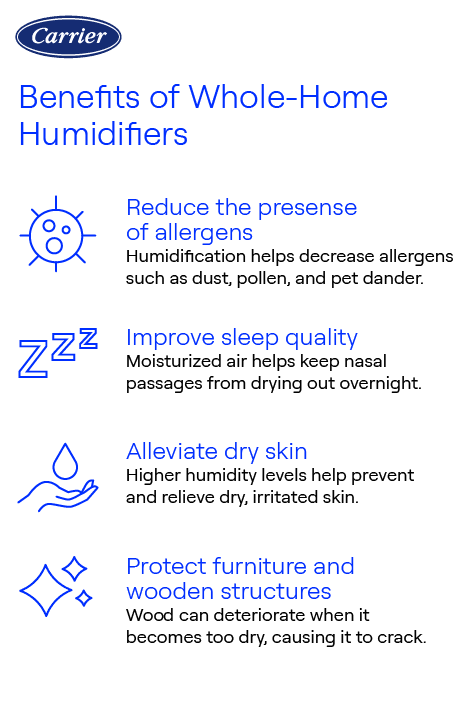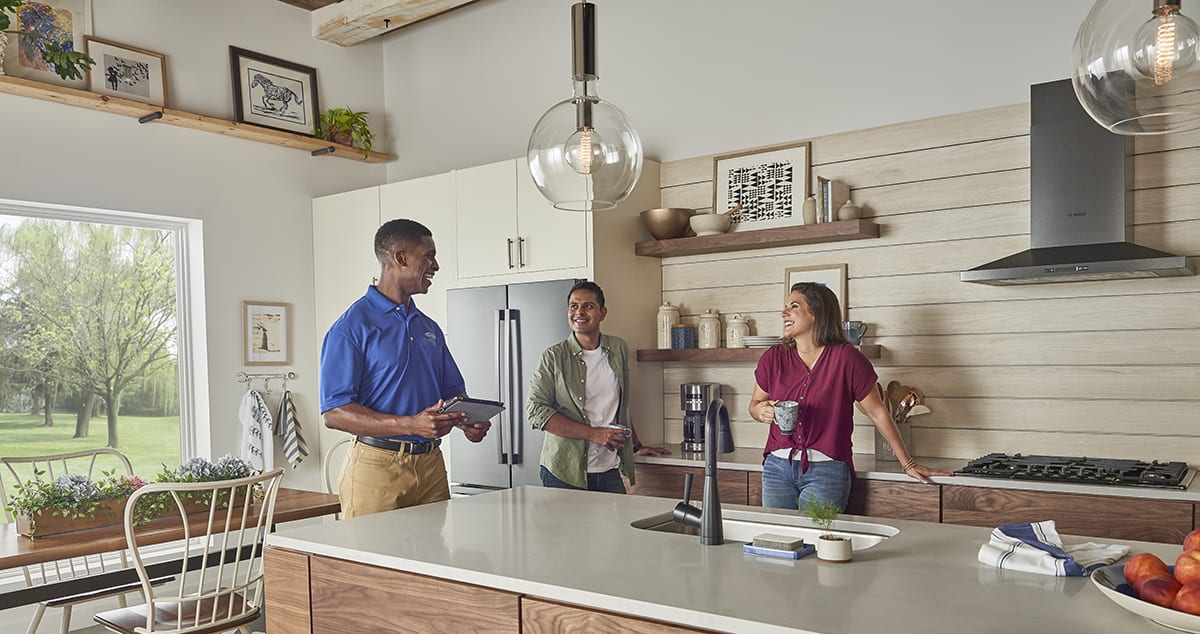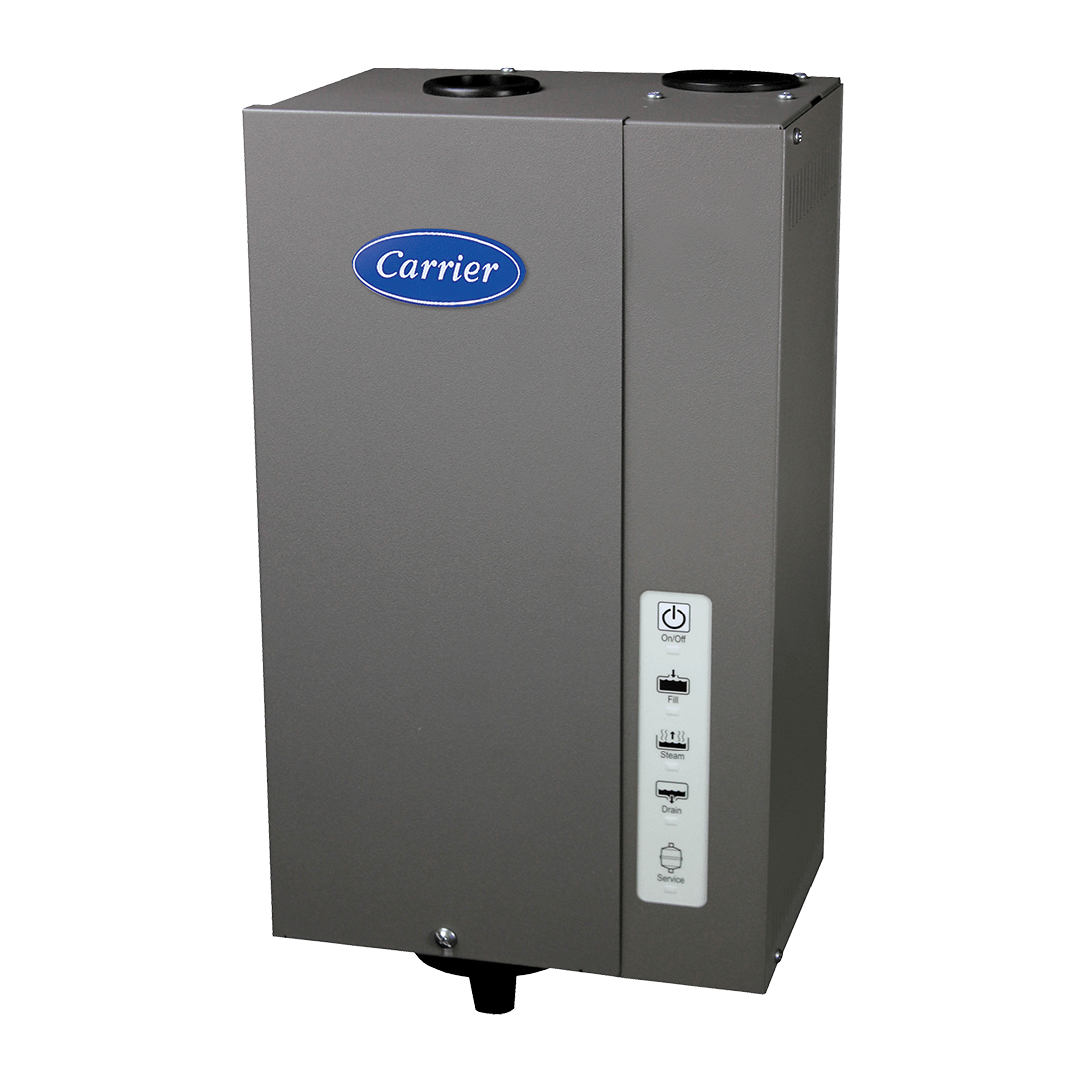Whole-House Humidifiers: Pros and Cons You Should Know
Whole-house humidifiers offer a convenient way to maintain consistent indoor humidity levels, helping to reduce allergens 1, prevent dry skin, protect wood furnishings, enhance sleep quality2 and improve overall comfort—especially during dry winter months. However, they do come with potential drawbacks, including the need for regular maintenance to prevent mold or bacteria buildup, upfront installation costs, and the risk of over-humidification if not properly controlled.

What is a Whole-House Humidifier?
HVAC Humidifier Pros and Cons At-a-Glance
| Pros | Cons |
| Eases dry skin & irritated nasal passages | Upfront installation cost ($400 - $1,200) |
| Protects wood floors & furniture | Regular pad/filter changes |
| Helps your home feel warmer, helping potentially lower heating bills | Risk of mold if relative humidity is too high |

Whole-House Humidifier Benefits
Whole-home humidifiers come with many benefits according to Kevin Dickson, president of Energy Services Air Conditioning, Heating and Electrical in Naperville, Illinois.
““Properly humidified air feels much more comfortable than dry air,” Dickson said. “It can help prevent dry skin, static electricity, and irritation to your eyes and throat. In many homes, this added comfort allows you to set your thermostat a bit lower in the winter and still feel comfortable, which can help you save on energy costs. It's more than just comfort though — it’s about protecting your home and improving indoor air quality for everyone living there. The right humidity level can help protect wood floors and furniture."
Improved Air Quality
When the air is too dry, it can cause discomforts, such as dry skin, irritated nasal passages, and snoring. These issues are particularly prevalent during winter months when indoor heating systems contribute to dry air conditions.
Using a humidifier helps maintain optimal humidity levels in your bedroom, creating a more comfortable sleep environment. Mayo Clinic recommends keeping bedroom humidity between 30% and 50%3. This range provides enough moisture to prevent dryness and discomfort without creating excessive dampness.
A humidifier also combats the effects of dry air on the skin by releasing moisture into the air, increasing humidity levels, and helping to restore and maintain optimal moisture balance in the skin. This helps prevent the skin from becoming dry, itchy, and flaky by replenishing the skin's moisture and reducing water loss to make it more healthy.
Protection for Furniture and Wooden Structures
Greater Comfort and Potentially Lower Heating Bills
Potential Drawbacks of Whole-House Humidifiers
Upfront Cost
Installation Requirements
Maintenance and Operation Costs
Risk of Mold and Mildew

Whole-House vs. Portable Humidifiers
Steam vs. Fan-Powered vs. Bypass: Which Whole-House Humidifier Fits Your Home?
- Steam humidifiers produce the most humidity and operate independently of your furnace, making them ideal for larger homes or extremely dry climates.
- Fan-powered models use an internal fan to push air through a water panel, delivering moisture efficiently with moderate energy use.
- Bypass humidifiers rely on your furnace’s blower fan to circulate air through a moisture panel, offering a cost-effective and energy-efficient option—best for homes where running the furnace regularly isn’t an issue.
Talk To Your Carrier Dealer About the Benefits of Whole-Home Humidifier Benefits
Explore Carrier Humidifiers
Consider a Carrier humidifier to maintain ideal humidity levels and enhance comfort in your home. Carrier humidifiers help prevent dry skin, static electricity, and respiratory issues by adding moisture to the air, especially in the winter months. They are designed for quiet operation and energy efficiency, ensuring consistent humidity control without increasing energy costs. With reliable performance and easy integration into your HVAC system, Carrier humidifiers promote a healthier, more comfortable living environment year-round.
Frequently Asked Questions About HVAC Humidifiers
While humidifiers offer many benefits, regular cleaning is required to prevent mold, bacteria, and mineral buildup. Additionally, over-humidification or excess moisture can promote mold growth, dust mites, and other allergens. Whole-home humidifiers range in cost. Learn more about whole-home humidifier cost.
Learn More About Home Humidifiers
- Choosing the best humidifier for your home
- Cost to buy or replace a whole-home humidifier
- Breathe easier with better indoor air quality at home
- Learn the difference between a humidifier vs dehumidifier
- Discover what humidity should be house be at?




